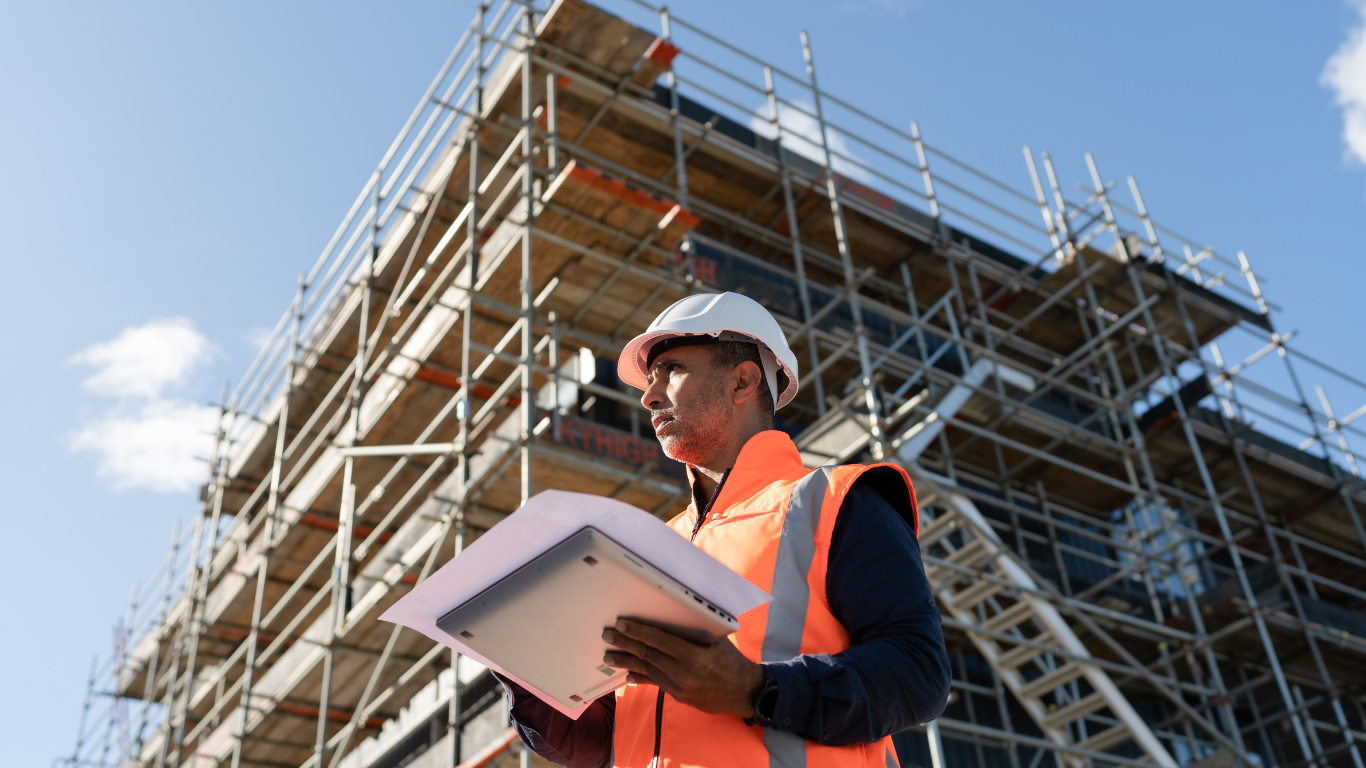
From Hard Hats to Smart Tech: RPA and AI’s Place in Construction
The construction industry has long been synonymous with physical labour, grit, and the unmistakable hard hat. But a new era is unfolding—one that’s not defined by brute strength, but by intelligent systems that enhance productivity and decision-making. At the forefront of this digital transformation are Robotic Process Automation (RPA) and Artificial Intelligence (AI)—technologies that are helping construction companies operate more efficiently, reduce costly errors, and build smarter from the ground up.
From automating timesheets and project journals to predicting delays and optimising resource allocation, RPA and AI are reshaping how construction firms manage both their back office and field operations. In this blog, we explore how these technologies can help your construction business thrive in an increasingly competitive landscape.
What is RPA—and How Does AI Enhance It?
Robotic Process Automation (RPA) involves the use of software “bots” to handle repetitive, rules-based digital tasks. These bots can log into systems, extract or enter data, generate reports, and initiate workflows—often faster and more accurately than humans.
Artificial Intelligence (AI), by contrast, adds cognitive capabilities to digital tools. AI can analyze data, recognize patterns, learn from historical trends, and make recommendations or predictions. When integrated with RPA, AI takes automation to the next level—transforming static processes into intelligent, adaptive systems.
Together, RPA and AI create a powerful synergy: RPA handles structured, repetitive tasks, while AI manages unstructured data, decision-making, and predictive analysis.
Why Does the Construction Sector Need RPA and AI?
Construction is a high-stakes industry with thin margins, tight deadlines, and intense regulatory oversight. The adoption of RPA and AI addresses many of these challenges:
- Reduced manual workload: RPA automates time-consuming administrative tasks like payroll, time tracking, and procurement logging, while AI assists in optimising schedules and identifying inefficiencies.
- Improved compliance and safety: RPA ensures consistent generation and archiving of compliance documents and safety reports. AI can analyze safety data to identify risk patterns before incidents occur.
- Smarter project management: AI algorithms can forecast project delays based on weather, material supply, or labour shortages. Combined with RPA, these insights can automatically trigger alerts or contingency workflows.
- Real-time communication: Bots and AI-powered assistants can send updates, reminders, and alerts to keep stakeholders informed and aligned.
Real-World Applications in the Construction Industry
Cevitr has vast experience in the construction industry helping our clients automate a wide range of processes. Including the following;
Finance & Billing Automation
End-to-End Customer Billing
Automates billing based on standardized templates, ensuring accuracy, timeliness, and compliance with contractual terms.
Journal Validation & Uploads
Validates financial journals and uploads them into ERP systems, reducing manual errors and improving audit readiness.
Accounts Payable Processing
Automates supplier invoice entry across multiple systems, streamlining AP workflows and reducing cycle times.
Expense Processing
Processes employee expense claims, validates receipts (including photographic ones), and ensures correct cost allocation—speeding up reimbursements and improving policy compliance.
Cash Allocation
Matches incoming payments to customer accounts, improving cash flow visibility and reducing reconciliation efforts.
Supplier Statement Reconciliation
Automates reconciliation of supplier statements against internal records, identifying discrepancies quickly.
Annual/Quarterly Cost Rate Updates
Updates cost rates based on templated inputs, ensuring financial models and forecasts remain accurate.
Reporting & Compliance
Reporting (Daily/Weekly/Monthly/Ad-hoc)
Generates operational, financial, and compliance reports on demand, freeing up analyst time and improving decision-making.
Carbon Reporting
Extracts and compiles data from systems to support sustainability and ESG reporting requirements.
Health & Safety Reporting
Automates incident reporting and compliance tracking, supporting regulatory adherence and internal safety programs.
Construction Industry Training Manual Verifications
Verifies training compliance against key parameters, ensuring workforce readiness and regulatory compliance.
Project & Procurement Operations
Project Close
Automates the closure of completed projects in systems, ensuring clean handovers and accurate historical records.
PO Close/Finalisation
Finalizes purchase orders based on templated requests, helping maintain procurement hygiene.
Project Task Creation, Funding & Baselining
Creates and baselines project tasks based on structured inputs, accelerating project initiation.
3-Way Invoice Matching (PO + GRN + Invoice)
Ensures accurate invoice processing by matching against purchase orders and goods receipts, reducing payment disputes.
GRN Reversals
Reverses incorrect goods receipt notes based on templated requests, maintaining inventory and financial accuracy.
Posting GRN for Hired Equipment
Posts daily GRNs for hired equipment, ensuring timely recognition and tracking of assets.
Plant Off-Hire Notifications
Sends automated notifications to suppliers when equipment is off-hired, improving asset lifecycle management.
HR & Timesheet Management
Timesheet Data Entry
Reads handwritten forms, Excel templates, and portal data to automate timesheet entries—reducing admin overhead and improving payroll accuracy.
Document & Data Management
Invoice Retrieval for Customer Audits
Retrieves invoices from systems to support customer audits, ensuring transparency and responsiveness.
Insurance Updates
Updates supplier insurance records with coverage periods and compliance checks, supporting risk management.
CIS Verification
Verifies subcontractors with HMRC before payment, ensuring compliance with Construction Industry Scheme regulations.
Asset Telemetry Recording
Captures and updates usage parameters from telemetry systems, supporting predictive maintenance and asset optimization.
The Future: Intelligent Automation in Construction
These use cases are just the beginning. As the construction sector continues to digitise, intelligent automation—the combination of RPA and AI—will become foundational to success. It’s not just about doing things faster or cheaper; it’s about becoming more agile, data-driven, and resilient.
From hard hats to smart tech, construction is undergoing a quiet revolution. And while RPA bots and AI systems may not be visible on the job site, they are working tirelessly behind the scenes—laying a digital foundation for a more intelligent and efficient construction industry.
Ready to Build Smarter?
If you’d like to explore how RPA and AI can help your construction business boost efficiency, reduce errors, and make smarter decisions, we invite you to enquire today.
